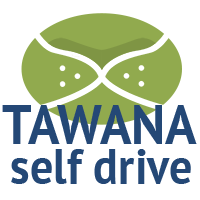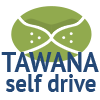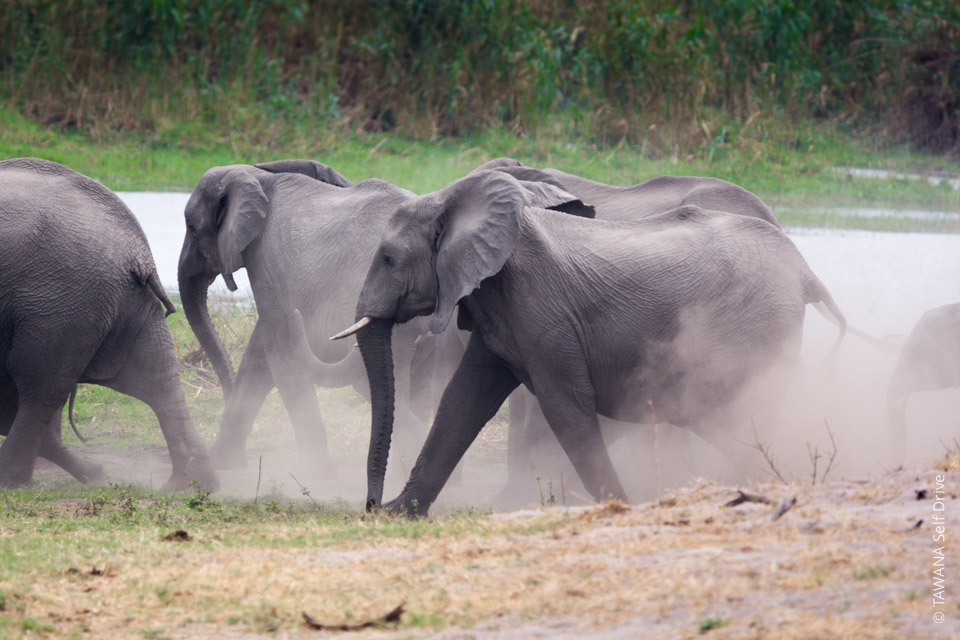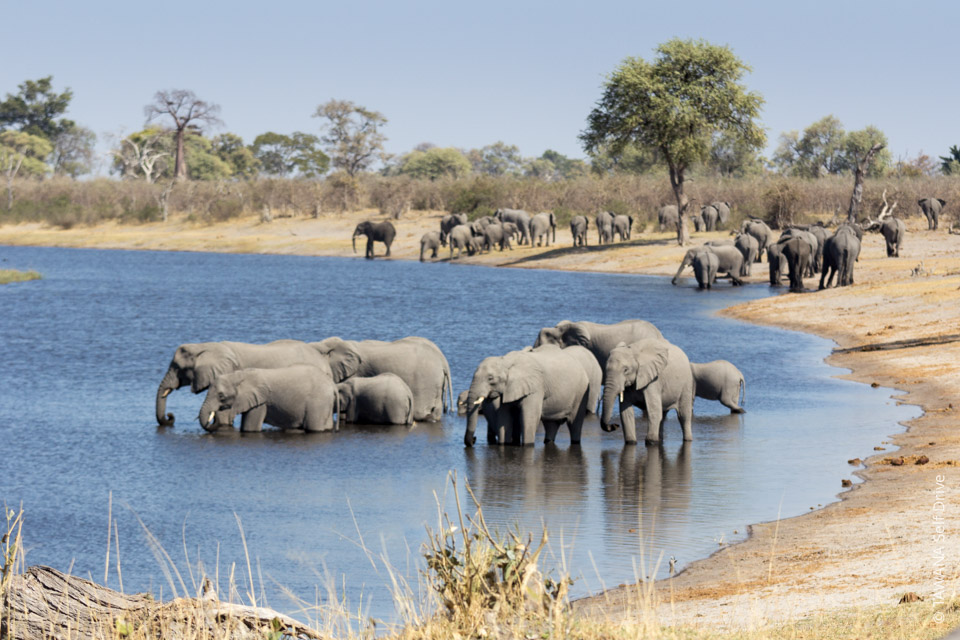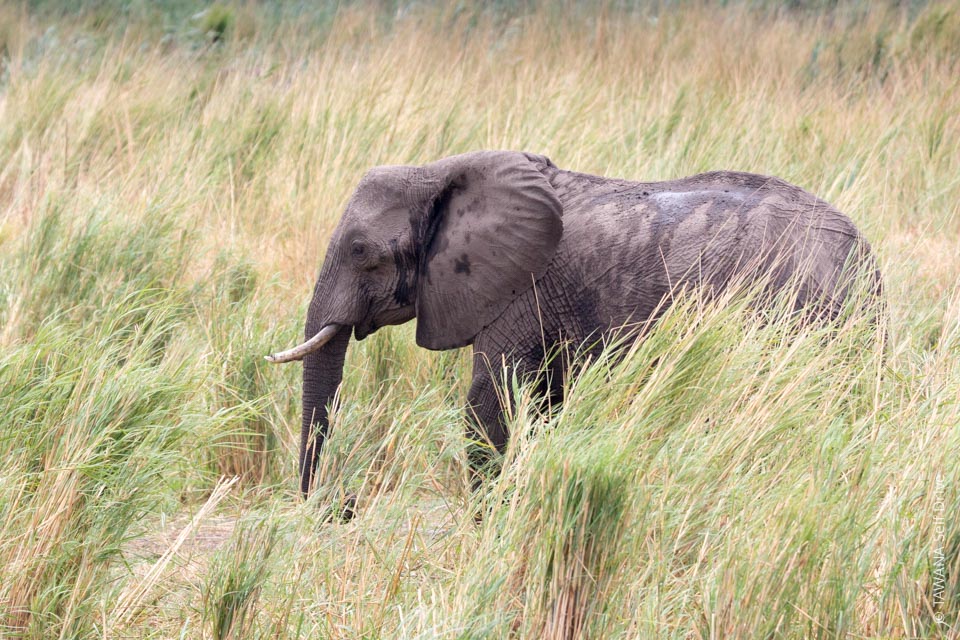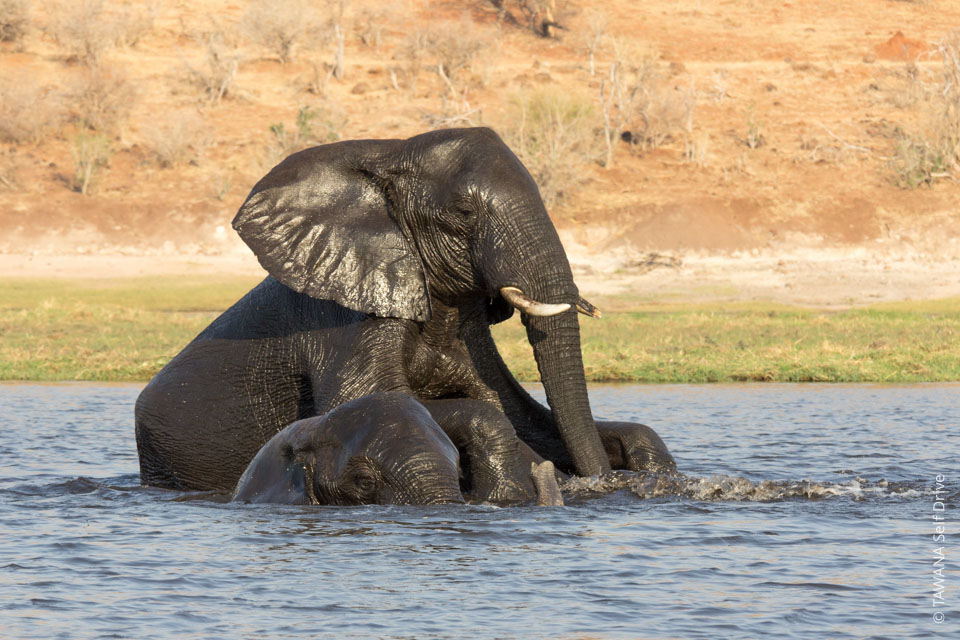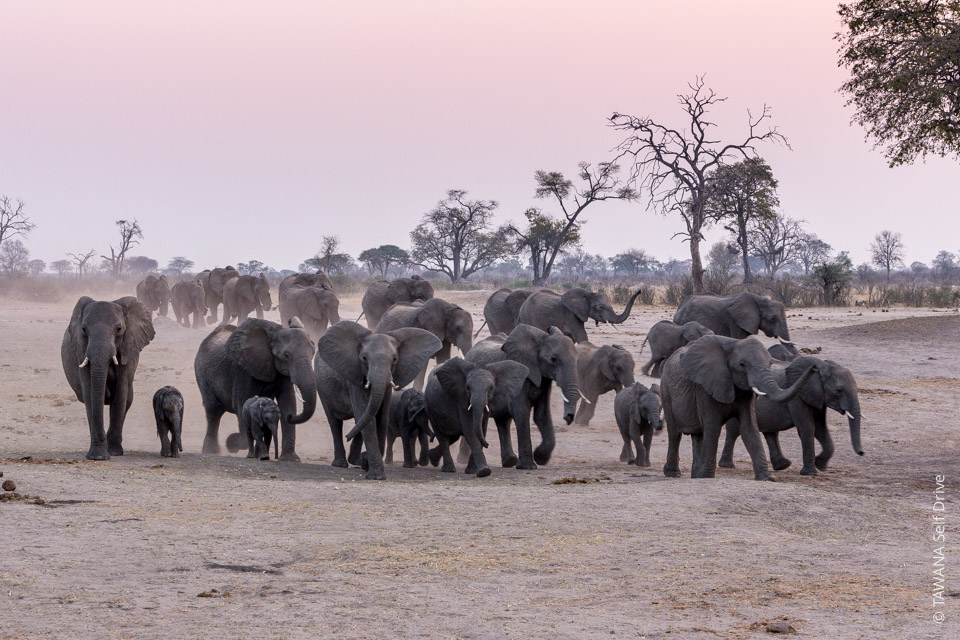
Elephant, Chobe National Park, Botswana
Self-Drive Safari Itinerary in Southern Africa
The Elephant route
The moving encounter with the largest and smartest mammal in Africa!
The Elephants Route: a self-drive tour focused on elephants of Chobe, Hwange and Caprivi
Living at the pace of the elephants, amongst them is the promise of this self-drive tour on three emblematic regions of southern Africa: the Chobe in Botswana, the Caprivi in Namibia and the Hwange in Zimbabwe. This territory shared between three countries is the playground without borders of the largest herds of elephants in Africa.
Follow their paths by taking this route designed to slow down, refocus, live each stage intensely and encourage many moments of observation and wonder that does good to your soul.
Detailed itinerary
The Caprivi Strip is a narrow piece of land belonging to Namibia and forming a natural corridor for elephants migrating from Botswana to Angola, Zambia and Zimbabwe.
Three national parks have been created and they all offer remarkable elephant viewing opportunities thanks to the Kwando river and the floodplains bordering it.
Also known as the Mashi river, the Kwando river originates in Angola where it is named Cuando. It’s 800 km long route ends at the east of Caprivi with the formation of the Linyanti marsh, another inner delta that is reminiscent of its big brother : the Okavango delta.
The marsh undergoes a spectacular seasonal transformation from a dry dusty environment in winter to a swamp that is sometimes impassable in summer. The permanent waters flowing through it are particularly attractive for large herds of elephants moving in the dry season from the Linyanti region of Botswana. The pachyderm density reaches its peak during the months of July, August and September.
Bwabwata Kwando Core
To the west of Kwando river, the susuwe triangle impresses with its diversity of wildlife and its magnificent views of typical wetland environment. As such, Horseshoes is a must. This Horseshoe-shaped lagoon attracts countless elephants who drink and bathe in the afternoon, offering a magnificent spectacle.
Kwando core is also a home to many herbivores, a myriad of birds, but also lions, leopards, cheetahs, wild dogs and hyena’s making this ecosystem particularly interesting to explore.
Mudumu National Park
In Mudumu, the elephants dominate the wildlife, yet it is composed of a beautiful diversity of animals. Its plains and forests landscapes attract buffaloes, lions, leopards, giraffes,all kinds of antelopes including the rare sitatungas. The canals are home to hippos, crocodiles and otters. Mudumu is also paradise for birds with 430 listed species.
The observation of the elephants coming to drink is facilitated by a platform dominating the river.In winter, herds come and go all day long to this particular area that hippos, Lechwe cobes, and magnificent roan antelopes also like to frequent.
Nkasa Rupara National Park
The Nkasa Rupara park (formerly Mamili) runs east along the Linyanti river and west along the Kwando river, and plays a very important role in the eastern caprivian river ecosystem. The Kwando River is indeed connected to the Okavango Delta by the Selinda Canal and to the Zambezi River by the Linyanti-Chobe River. During the rainy season, Nkasa Rupara is so flat that 80% of the park is flooded by the river, leaving only 2 large wooded islands (Nkasa and Lupala). It then host an important wildlife under its magnificent jackalberry and sausage trees.
This sumptuous swamp is little visited by tourists and it is probably one of the best kept secrets in southern Africa. Here birds proliferate and there are lots of water dependent species such as the elephant, crocodile and hippo. More unexpectedly, Nkasa Rupara is home to a stable population of lions, who are very interested in the herds of buffaloes installed seasonally on the islands.
Facing the Linyanti region of Botswana, the elephants are naturally present in this park which is conveniently located on their migratory route to the north. It is possible to observe herds of several hundred individuals.
Suggested Accommodation
CHOBE NATIONAL PARK
Your self-drive tour continue on the banks of the Chobe River, in Botswana.
Chobe National Park is located in the northern part of Botswana, on the banks of the river of the same name, serving as the natural border between Botswana and Namibia. The park, the second largest protected area in the country, is known for its superb year-round wildlife viewing. But the region owes its reputation above all to its impressive herds of elephants gathering along the Chobe and Linyanti rivers. The park is home to the largest populations of living elephants in the world, currently estimated of more than 130,000.
The elephants in the region make seasonal movements of up to 200 kilometers from the Chobe and Linyanti river, where they concentrate during the dry season, to the basins located in the south-east region of the park where they are found during the rainy season.
To discover the Chobe park in complete privacy, far away from the numerous safari cars that abound in the eastern section we invite you to focus your self-drive tour on the west side of the riverfront to explore the trails between Ngoma gate and serondela that elephants particularly like, in addition to the beautiful pans located inland.
Beyond the national park, Chobe Forest camp,Thobolo and Senyati offer special experiences with elephants through the presence of sightseeing platforms positioned above water points or bunker.
Suggested Accommodation
HWANGE NATIONAL PARK
The Hwange national park of Zimbabwe is also home to one of the largest elephant populations in Africa. It is estimated that there are 44,000 pachyderms living in this 14,651 km² of the park, almost half of Zimbabwe’s elephant population and an estimated density of three elephants per square kilometer!
They are even the most important animals in the park, representing 90% of the biomass. As Hwange has little natural surface water, animals converge during the dry season to artificial water points fed by drilling in the soil. They can then form groups of more than 350 individuals. These unusually large, massive herds are called «super-herds» and are unique to the region.
Watching one of these huge herds on a water hole is a fascinating experience. As in the Chobe river, it is not uncommon for animals bathing and splashing gaily. The youngest can play for hours and be called to order by mature females whose role is to control the whole family!
In all the herds regardless of their size, elephants know each other intimately and have strong ties which is essential for their safety. The herd constitutes of a real refuge. It is therefore all the more impressive that these super herds of Hwange which are between 100 and 350 individuals, are also able to maintain these close relations.
At the beginning of the rainy season, the Hwange elephants scatter and migrate to Botswana before reforming super herds in the dry season. They can be seen from numerous platforms overlooking the main water points of the park, notably in Nyamandhlovu, Guvalala and Masuma Dam.
Suggested Accommodation
VICTORIA FALLS
The elephants route can end on the banks of the mythical Zambezi river and by visiting the spectacular Victoria Falls!
Forming the world’s largest water curtain, the waterfalls are located on a 1.7km wide part of the river where the water plunges at a height of nearly 100m. The flow is particularly important after the rainy season. The cloud of mist that escapes is then visible at more than 30km. Natural border between Zambia and Zimbabwe, they are most impressive on the Zimbabwean side but can be visited from both countries.
Some reasons to choose this route
Elephants move slowly and their seasonal migration does not exceed 250 km! Follow the footsteps of the giants of the savannah by opting for this itinerary based on short and limited stages in order to live a journey all in wisdom and intensity, in the image of the biggest mammal of Africa.
You choose exactly the level of difficulty of your itinerary thanks to accommodations like camping, bush camp or lodge, selected for their accessibility, optional guided activities and facilities to aid on-site observation of animals (water point, platform or bunker).
The Elephant Route is especially suited for a lodge to lodge self drive safari on a budget.
